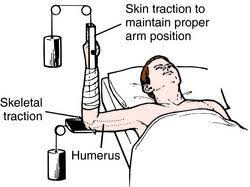A nurse is assessing a client who has a fluid volume deficit. The nurse should expect which of the following findings?
Decreased hemoglobin (Hgb)
Increased blood urea nitrogen (BUN)
Increased urine ketones
Decreased urine specific gravity
The Correct Answer is B
Choice A reason:
Decreased hemoglobin (Hgb) levels can be indicative of anemia or blood loss, but they are not typically associated with fluid volume deficit. In cases of fluid volume deficit, the Hgb concentration may actually appear elevated due to hemoconcentration as the plasma volume decreases.
Choice B reason:
Increased blood urea nitrogen (BUN) levels are expected in a fluid volume deficit because as the blood volume decreases, the concentration of solutes like urea can increase. This is often due to decreased renal perfusion and subsequent reduced renal function, leading to less urea being excreted through the kidneys.
Choice C reason:
Increased urine ketones are typically associated with diabetic ketoacidosis or starvation, not directly with fluid volume deficit. Ketones are produced when the body breaks down fats for energy, which is not a process directly related to fluid volume status.
Choice D reason:
Decreased urine specific gravity would not be expected in fluid volume deficit; in fact, one would expect the opposite. Specific gravity measures the kidney's ability to concentrate urine. In fluid volume deficit, the urine specific gravity would likely be increased as the body attempts to conserve water.
Nursing Test Bank
Naxlex Comprehensive Predictor Exams
Related Questions
Correct Answer is ["B","C","D"]
Explanation
Choice A reason:
The statement "The client is Black" does not contribute to the risk of chlamydia based on race alone. Chlamydia infection rates are influenced by a variety of factors, including access to healthcare and socioeconomic status, rather than race itself.
Choice B reason:
Having multiple sexual partners significantly increases the risk of contracting sexually transmitted infections (STIs) like chlamydia because it raises the likelihood of exposure to an infected partner.
Choice C reason:
While being male is not a risk factor in itself, men who have sex with men (MSM) are at a higher risk for STIs like chlamydia due to biological and behavioral factors that facilitate transmission.
Choice D reason:
Engaging in sexual activities with men is a known risk factor for chlamydia among MSM due to the higher prevalence of this STI within this group.
Choice E reason:
The age of 37 does not specifically contribute to the risk of chlamydia. However, chlamydia is more commonly diagnosed in younger individuals, typically those under 25 years old, due to higher rates of new and multiple sexual partnerships.
Correct Answer is C
Explanation
Choice A reason:
Skin traction is indeed less restrictive than skeletal traction, allowing for more mobility. It is applied using bandages or adhesive material to the skin, which can be removed or adjusted more easily than the pins or screws used in skeletal traction. This type of traction is typically used for short-term treatment before surgery or when the injury is less severe.
Choice B reason:
Discomfort levels can vary depending on the individual and the specific circumstances of the traction. However, skin traction is generally considered to be less painful than skeletal traction because it is less invasive and applies less force. Skeletal traction, which involves the insertion of pins or wires directly into the bone, is likely to cause more discomfort due to the invasive nature of the procedure.
Choice C reason:
Skeletal traction is more appropriate for reducing fractures, especially in cases where a greater force is needed to align the bones. It involves the surgical insertion of pins or wires directly into the bone, allowing for a stronger and more stable pull that is necessary for the realignment of complex fractures.
Choice D reason:
Skeletal traction carries a higher risk of infection compared to skin traction because it is more invasive. The insertion of pins or wires into the bone creates a potential entry point for bacteria, which can lead to infection at the site of insertion.

Whether you are a student looking to ace your exams or a practicing nurse seeking to enhance your expertise , our nursing education contents will empower you with the confidence and competence to make a difference in the lives of patients and become a respected leader in the healthcare field.
Visit Naxlex, invest in your future and unlock endless possibilities with our unparalleled nursing education contents today
Report Wrong Answer on the Current Question
Do you disagree with the answer? If yes, what is your expected answer? Explain.
Kindly be descriptive with the issue you are facing.
